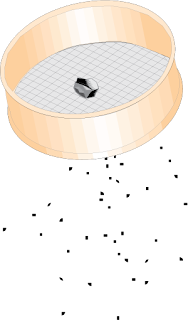 |
| Sifting |
My Morris Dictionary of Word and Phrase Origins tells me that sort comes from the same root as sorcerer, and it's also related to the word fate. People in Roman times would go to a wizard who would let them draw lots to discover their fortune.
Setting aside this lesson in language history, I now want to get to the math. A few days ago, this blog had a special visitor. He or she came from a new country and brought our visitor country count up to 175. You can see the whole list by clicking on the Flag Counter in the left margin.
I thought we would look at the concept of sorting this week, using sample data from the last 25 new countries to come to the Excel Math blog. In this context, sorting means arranging in numerical order from smallest to largest (or the opposite), or in alphabetical order, or in any other logical order we choose (date, color, etc.)
Here's my list of those countries, sorted by the number of visitors from each country:
 |
| Sorted by Number of Visitors to Excel Math Blog, in ascending order |
This is the list of countries sorted in ascending order (small to large) by population. I used units of thousands for the population column. That worked well enough for the Caribbean islands, other small countries AND China. China is at the bottom only because I chose to put the smallest populations at the top.
 |
| Sorted by Population in Thousands, in ascending order |
Next, here are the same countries sorted in ascending order by size (area), in square kilometers.
 |
| Sorted by Area in Square Km, in ascending order |
You can see from a quick glance that Macau is half the size of San Marino but it has 18 times the population. It must be crowded there! This fact did not stand out in the previous sorting. Now it has me thinking that I could set up a formula and find the population per sq km for all these countries. But maybe later.
Sifting and Sorting is the kind of analysis that lets us put data into categories (mathematicians tend to call categories sets). We can see common issues that might be based on size, population, or government. For example in both of these sorts we can see that countries of smaller size and/or population tend be part of larger countries.
In Excel Math curriculum, we teach kids to sort in a variety of ways. We'll investigate this technique again tomorrow.
PS - just moments ago, as I was working on this post, a visitor from the Cayman Islands came by, raising the count to 176!
